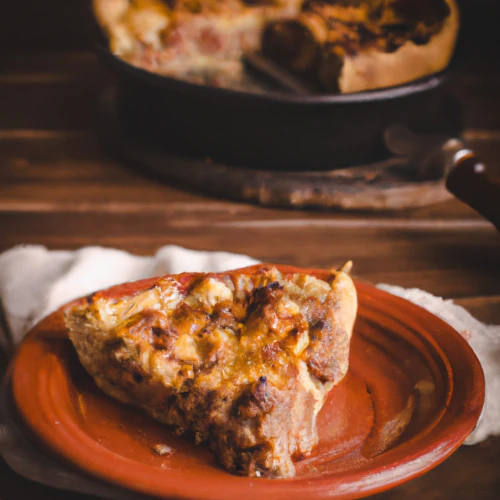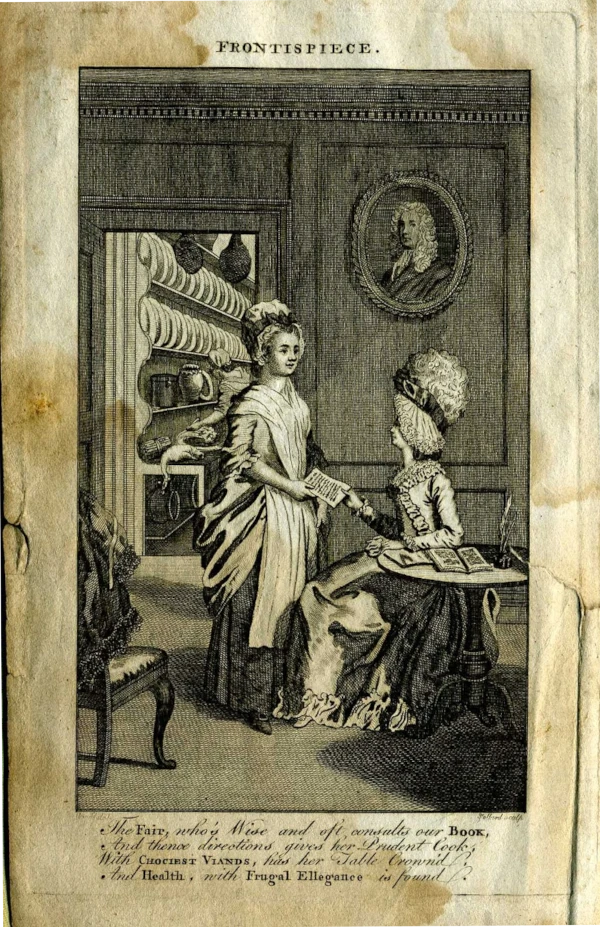Old-Fashioned Mincemeat Pie

Today, we're going to be baking an Old-Fashioned Mincemeat Pie, a recipe that's been passed down through generations and finds its roots in one of the earliest American cookbooks. This isn't just a pie; it's a time capsule, filled with the rich, hearty flavors of beef, apples, and a medley of spices, all nestled within a beautifully flaky crust. Whether you're a whiz in the kitchen or just starting out, this recipe will guide you every step of the way to create a homemade mincemeat pie that's brimming with nostalgia and warmth. So, tie on your apron, preheat that oven, and let's embark on a journey back in time. We're about to bring the flavors of colonial America right into your kitchen with this classic mincemeat pie. Ready to get cookin'? Let's do this!

Ingredients
1 lb ground beef 3/4 tsp salt 1 1/2 lbs apples, peeled and chopped 1/3 cup suet (substitute with tallow, coconut oil, or butter) 3/4 cup apple cider 1 Tbs ground mace 1/2 Tbs cinnamon 1/2 tsp nutmeg 8 Tbs (1/2) cup raisins 8 Tbs (1/2 cup) dried currants 3 Tbs chopped candied citron pieces
Method
- 1. Traditionally, mincemeat pies used boiled, finely chopped meat. For authenticity, you can follow this method. But for a quicker, simpler version, just use ground beef. In either case, brown the meat in a saucepan over medium heat, and add the salt.
- 2. In a large bowl, combine chopped apples, chopped suet (or your suet substitute), cider, spices, and fruit. Add the beef and mix well until all ingredients are thoroughly combined.
- 3. Line a 9″ pie plate with your favorite pie pastry recipe.
- 4. Pour the mincemeat filling inside, spreading it evenly, and then put on the top crust. Seal the crust around the edge with a fork and cut little slivers in the middle to let out steam.
- 5. Then bake in a 400 degree oven for about 45 minutes, or until the crust looks golden brown.

Recipe Notes
This recipe is adapted from the 1798 classic cookbook, "American Cookery". The original recipe calls for suet, which is a hard white fat found around the kidneys and loins of animals. But, suet can be a bit tricky to find these days. If you have it, feel free to use it. If not, tallow, which is rendered suet or other animal fat, is a good substitute. If tallow is also hard to come by, coconut oil or butter will do the trick. If you opt for coconut oil, go for the refined type to avoid a coconut flavor in your pie. Remember, the fat content of your beef may affect how much additional fat you need. For 85% ground beef, a 1/3 cup of fat should be just right. If your beef is leaner, you might need a smidge more.
The Rich History and Variations of Mincemeat Pie

Mincemeat Pie, a classic dessert that dates back to medieval times, has a rich and flavorful history. Originally, this pie was filled with a mixture of minced meat, suet, a variety of fruits, and spices, hence the name 'mincemeat'. Over the centuries, the recipe has evolved, and today, it's often made with a combination of apples, raisins, and spices, all encased in a flaky pastry crust.
In the 17th century, mincemeat pies were a status symbol at Christmas due to the expensive, imported ingredients they contained, such as spices and dried fruits. However, during the English Civil War, they were banned by Puritan leaders who considered them a frivolous indulgence. Thankfully, the ban didn't last, and by Victorian times, the pies had evolved into the sweet, fruit-filled treats we know today, with meat becoming a less common ingredient.
Mincemeat pie evolved significantly when it crossed the Atlantic and became a staple in American kitchens. Before the Civil War, American cookery was largely about food preservation. Railroads had not yet connected the country coast to coast so most foods were locally sourced. Beef was a significant part of the American diet, and there was often a surplus of leftover cooked beef. Mince pie emerged as a creative and practical solution to utilize these leftovers.
In its American incarnation, a real mince pie was more than just a medley of dried fruit and spices. It was a culinary innovation born out of necessity and thrift. Leftover meat was minced and combined with spices, rum, dried fruit, and sugar to create a filling that was not only delicious but also helped preserve the meat—an added benefit in those times. This practice was a testament to the resourcefulness of early American cooks who made the most of what they had on hand.
While the classic version remains a favorite, there are countless variations and creative adaptations of Mincemeat Pie. Some recipes incorporate different fruits, such as currants or candied citron, while others experiment with alternative fillings like mushrooms or butternut squash. Vegetarian and vegan options have also gained popularity, replacing the meat with plant-based alternatives and adding a variety of vegetables and legumes.
The crust of a Mincemeat Pie recipe is just as important as the filling. Traditional recipes call for a buttery and flaky pastry crust, providing a delightful contrast to the rich and savory interior. However, some variations use biscuit dough or puff pastry for a unique twist, adding extra layers of texture and flavor.
Mincemeat Pie is not only a delicious and comforting dish; it also brings people together. It is often served during holidays, family gatherings, and potluck dinners, where it becomes a centerpiece that sparks conversations and creates lasting memories.
Whether you're baking a classic rendition of this old-fashioned mincemeat pie recipe from 1798 or exploring creative variations, the dish continues to be a timeless favorite. Its ability to warm hearts and bring people together around the dining table is a testament to its enduring appeal. So, gather your ingredients, roll out that crust, and savor the delightful flavors of this beloved dish that has stood the test of time.